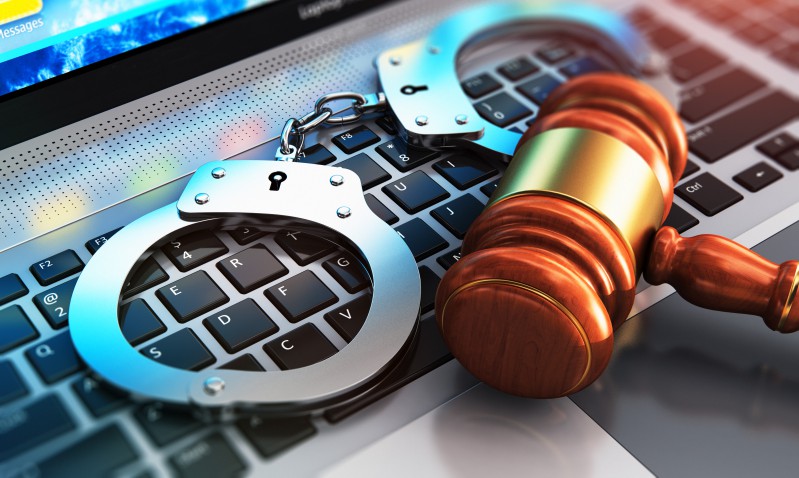
Recent legislation that targets illegal digital streaming provides a template for digital copyright law.
Some public policy issues are solutions in search of a problem, but unlawful streaming of copyrighted content is emphatically not one of those issues. U.S. Senators Thom Tillis (R-N.C.) and Patrick Leahy’s (D-Vt.) Protecting Lawful Streaming Act of 2020 (PLSA) became law in December 2020 as part of the Consolidated Appropriations Act, 2021. The importance of this law cannot be overstated. Not only did the PLSA modernize criminal copyright law in a long-overdue and positive direction, but it may also signal a new model for legislating digital copyright law going forward.
Unlawful Streaming: What is the Harm? Due to technological advances, it has become increasingly clear that lawful streaming is the go-to content delivery platform for many consumers. Unfortunately, unlawful streaming does not deviate from this trend. Legal streaming services have increased, and their unlawful counterparts have also proliferated.
The explosion in unlawful streaming services costs the U.S. economy nearly $30 billion per year. This illegal activity impacts growth in the creative industries in particular, which combined employ 2.6 million Americans and contribute $229 billion to the economy per year. In short, unlawful streaming is a threat to the economic security and well-being of millions of Americans.
The COVID-19 pandemic further exacerbated the harm from unlawful streaming as worldwide lockdowns led to a surge in online streaming. Not surprisingly, this surge in streaming included an aggressive uptick in unlawful streaming. According to analytics firm Muso, the unlawful streaming of films alone increased by 33 percent globally during lockdowns. The rise was even higher in the United States at an eye-popping 41 percent increase in unlawful streaming during lockdowns.
The Need for Modernization and the PLSA Solution. Even before the COVID-19-related surge in unlawful streaming, digital copyright laws governing the unlawful streaming of copyrighted content had long been overdue for modernization. In fact, copyright law had been overtaken by technology at least a decade prior to the PLSA’s enactment.
As streaming technology grew more robust and adoption surged over the past two decades, digital copyright law failed to keep up with this reality and unlawful streaming was, until the PLSA, a mere misdemeanor.
This penalty structure stood in contrast with the laws governing the unlawful reproduction and distribution of the same copyrighted content, both of which are subject to felony penalties. The misdemeanor penalties for unlawful streaming created economic incentives for large-scale criminal enterprise streaming platforms to thrive and grow online. These modern-day pirates were safe in the knowledge that, even if caught in the act, the culprits could escape meaningful prosecution—that assumes that the U.S. Department of Justice pursued prosecution for a misdemeanor offense at all.
The PLSA closed this “streaming loophole”––the enforcement gap between marketplace reality and existing copyright law––by making unlawful streaming by criminal commercial services a felony rather than a mere misdemeanor, thereby aligning it with the penalties for unlawful reproduction and distribution.
So, What Took Them So Long? Given the clear economic harm from unlawful streaming, copyright law’s lag behind technology begs the question: What took Congress so long? The answer lies in a series of legislative events that took place nearly a decade ago and dominated industry and congressional perspectives.
Introduced in 2011, the Protect Intellectual Property Act (PIPA) and Stop Online Piracy Act (SOPA) were companion Senate and House bills focused on strengthening existing U.S. copyright law to tackle online piracy. Key aspects of the PIPA/SOPA bills included:
- Provisions that would allow the Justice Department to seek a court order to block sites engaged in illegal conduct by using technical means, such as domain name system filtering;
- Proposed requirements that online service providers, including ISPs, search engines, ad networks, and payment providers, withhold services to websites that a court has deemed to be infringing copyrights held by U.S. content producers;
- Provisions aimed at tackling online pharmacies selling counterfeit drugs illegally from foreign websites; and, most important here,
- Broad provisions that would have closed the streaming loophole.
Despite careful crafting by the legislation’s sponsors, PIPA and SOPA were met with opposition from a range of legitimate stakeholders representing internet and consumer equities. Their advocacy against PIPA/SOPA culminated in over 5 thousand petitions per minute to the U.S. Congress, about 4 million tweets on the legislation, and petitions submitted to Congress containing 8 million signatures.
Concerns about the felony streaming provisions in PIPA/SOPA centered on the perception that, as drafted, it could lead to criminal prosecution of individual artists who regularly used platforms such as YouTube to upload their performances.
Ultimately, the sheer intensity of the opposition to PIPA/SOPA culminated in the legislation being withdrawn from consideration. This opposition took creative content industries and legislators by surprise and resulted in an unwillingness, for many years, to address what was perceived as such a controversial, complicated, and even unfixable issue.
So, What Changed? Why Now? In the years since PIPA/SOPA, the entire internet and digital copyright ecosystem has changed. Simultaneously, traditional lines dividing content creator industries and tech-heavy startups have blurred, creating more shared interests and equities. Several internet platforms have evolved their business models and are now original content creators themselves.
This evolution is important for two reasons. First, it changes those platforms’ economic incentives and leads them to think more like content creators with respect to content protection and digital copyright. Second, the platforms increasingly have their own in-house content protection teams whose work brings them into closer cooperation with the content industries. As the adage goes, “personnel is policy.”
The changes to the internet ecosystem in the last decade combined to create the preconditions for the PLSA, with traditional content industries, internet platforms, and consumer advocates bringing new and important perspectives to the table.
Members of the Senate Judiciary Committee Subcommittee on Intellectual Property took input from interested stakeholders—from traditional content industries to advocacy groups. Subcommittee members were clear that any effort to close the streaming loophole had to consider all legitimate equities and must, at a minimum, protect individual streamers and consumers and only target large-scale, commercial piracy organizations that had no legitimate business purpose. With diverse and representative stakeholder input, the subcommittee forged a targeted streaming loophole compromise focusing solely on large-scale, criminal enterprise streaming platforms.
This focus is evident from the text of Senators Tillis and Leahy’s bill itself, which creates a new provision on “illicit digital transmission services.” Under the provision, a person must act “willfully, and for purposes of commercial advantage or private financial gain,” and “offer or provide to the public a digital transmission service.”
In turn, a digital transmission service is defined as a “service that has the primary purpose of publicly performing works by digital transmission.” This carefully crafted, precise text puts guardrails around what is and is not unlawful streaming. It ensures that the scarce resources of the Justice Department’s Criminal Division will be deployed only in the most egregious cases, namely those criminal commercial streaming services that have no legitimate purpose other than unlawful streaming of copyrighted content.
Senator Tillis and Leahy’s bill evaded the criticisms that the felony streaming provision in PIPA/SOPA received and does not capture individual internet users or legitimate businesses and content creators, including, likely to some people’s disappointment, Justin Bieber.
Members of Congress and copyright stakeholders across the board were invited to the negotiating table on an equal footing. Negotiations proceeded in good faith and no stone was left unturned as stakeholders gamed out the real-world implications of the draft legislative text.
The PLSA sausage-making process was long and sometimes arduous, but the process resulted in better policy for all concerned, including individual streamers and internet users. Senators Tillis and Leahy’s bill, and the process that led to it, stand as templates for future digital copyright legislation.





